If you’ve read the first post in this series or are playing along yourself, you’ll be aware of the 52 Week Ham Radio Challenge. If not, hit up that link for the details!
This post covers the challenges from weeks 17-20, which were:
- Which VHF/UHF repeater is closest to your location?
- Make a QSO in one digital voice mode.
- Simulate an antenna!
- Decode the RTTY transmission of DWD on 10101 kHz
Week 17 (21-27 Apr): Which VHF/UHF repeater is closest to your location?
This week’s challenge was to find out about your closest repeater. Per Repeaterbook, that’s GB3PB around 4 miles away from my home. I receive it and it receives me just fine, but like most repeaters there’s rarely much activity. (I’d be the change I want to see in the world, but honestly VHF repeaters don’t interest me that much. I did give a quick “M0TRT listening” but got no reply.) There’s also local gateways MB7IPD and M0IDL within a couple of miles.
A very low-effort half-success.
Week 18 (28 Apr - 4 May): Make a QSO in one digital voice mode.
I ran a little late with this one. On the scheduled week I had no digital voice capable transceivers to try this with, but over a few POTA activations in the following months I got increasingly disgruntled with my VHF HTs—a Yaesu FT-60 with a battery that lasted about 5 minutes, and a Quansheng UV-K6 with its wide-open front end. When I spotted a Kenwood TH-D74 second-hand for a good price, I jumped on the opportunity to get a more modern HT in “as new” condition. So by August, I did actually have a DV transceiver, and I ended up buying an MMDVM hotspot too to try out the D-Star side of life. (Sadly there’s no D-Star repeaters in my area.)
It took a while to get things working, as the digital features of the radio, Pi-Star/MMDVM, and digital radio online services all have a pretty steep learning curve. However on Sunday 3rd August I finally managed a quick test QSO with Robin M0JQQ on the OARC DV bridge to confirm everything was working, and so succeeded at this week’s challenge eventually!
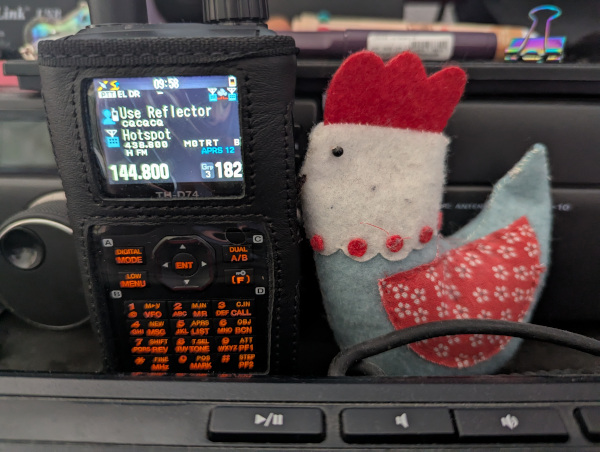
Week 19 (5-11 May): Simulate an antenna!
Antenna modelling is a new one for me. I picked the popular MMANA-GAL software and gave it a try.
As with a lot of amateur radio (and professional radio) software, the design stabilised somewhere around the late 90s, and given the typical user base, very little hand-holding is available for new users. Luckily it does come with a large number of examples which can be very useful once you figure out what they are.
I started modelling my 40m inverted-V dipole by loading an existing inverted-V design and tweaking the lengths to match mine. Thankfully the output was a reasonably low SWR and a good all-round far-field radiation pattern, much like I was expecting.
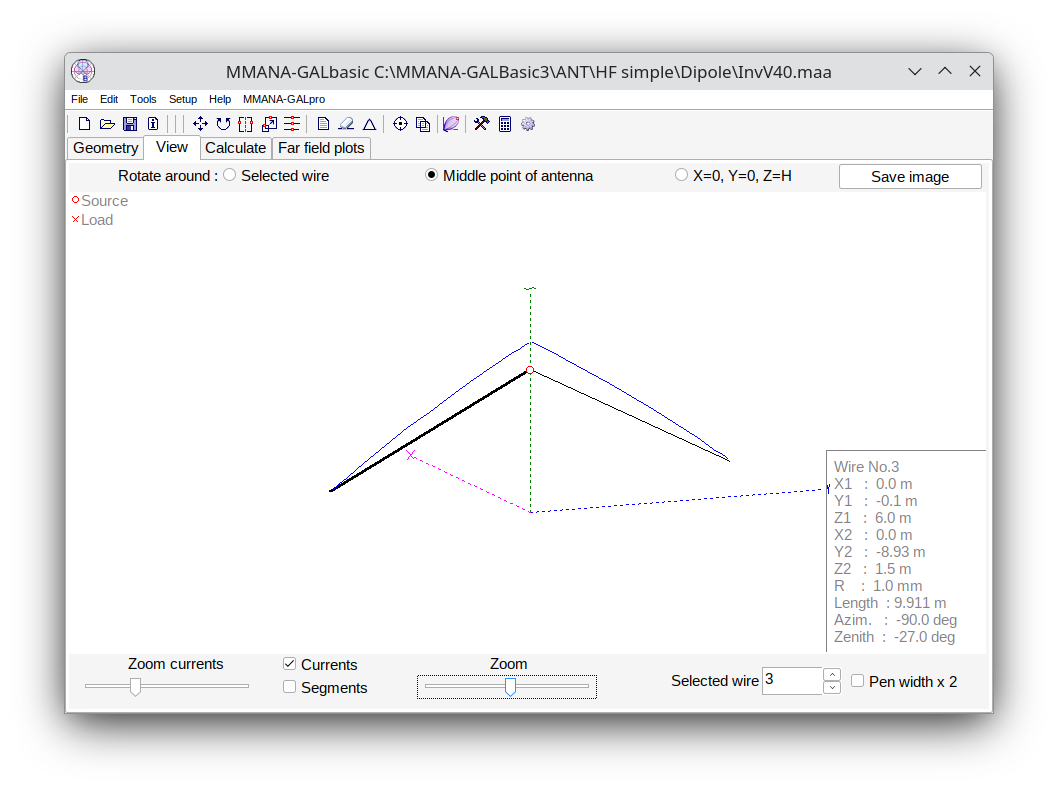
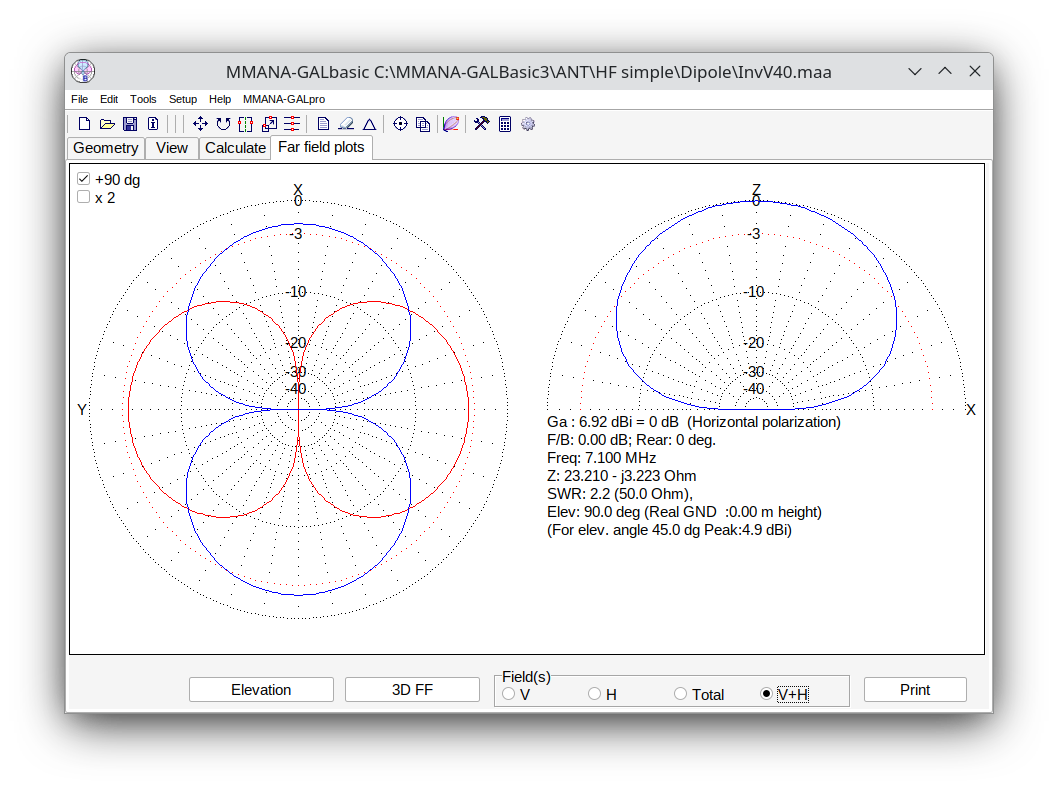
I then moved onto the JPC-12, a vertical with ground radials, on 20m. I split my radial ribbon into three parts, and try to space them out evenly when deploying the antenna. I managed to model a vertical and some radials, though at this point my lack of MMANA-GAL expertise let me down, and I couldn’t find a way to model the coil that sits part-way up the vertical.
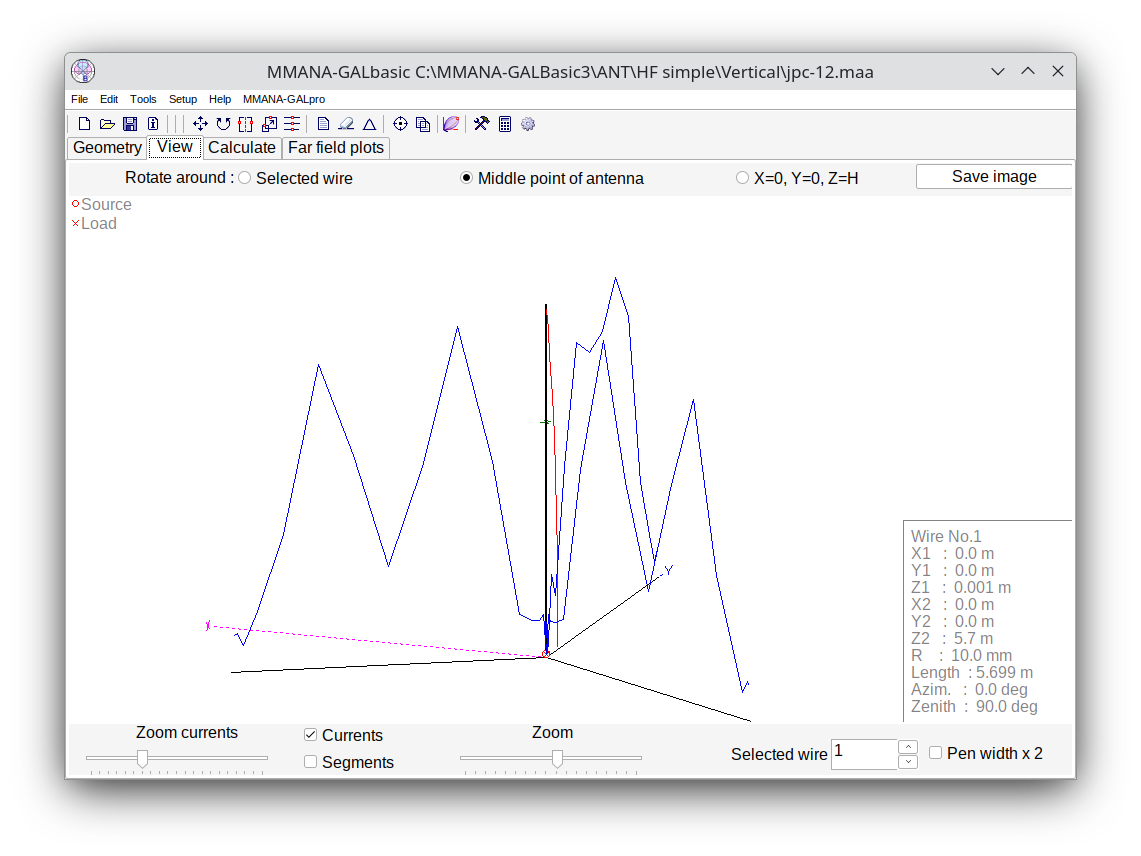
On the basis that the coil is there to effectively extend the electrical length of the vertical, I simply modelled it as a longer vertical than it actually is in practice. I got a nice radiation pattern, though I don’t have the knowledge to judge whether it’s accurate.
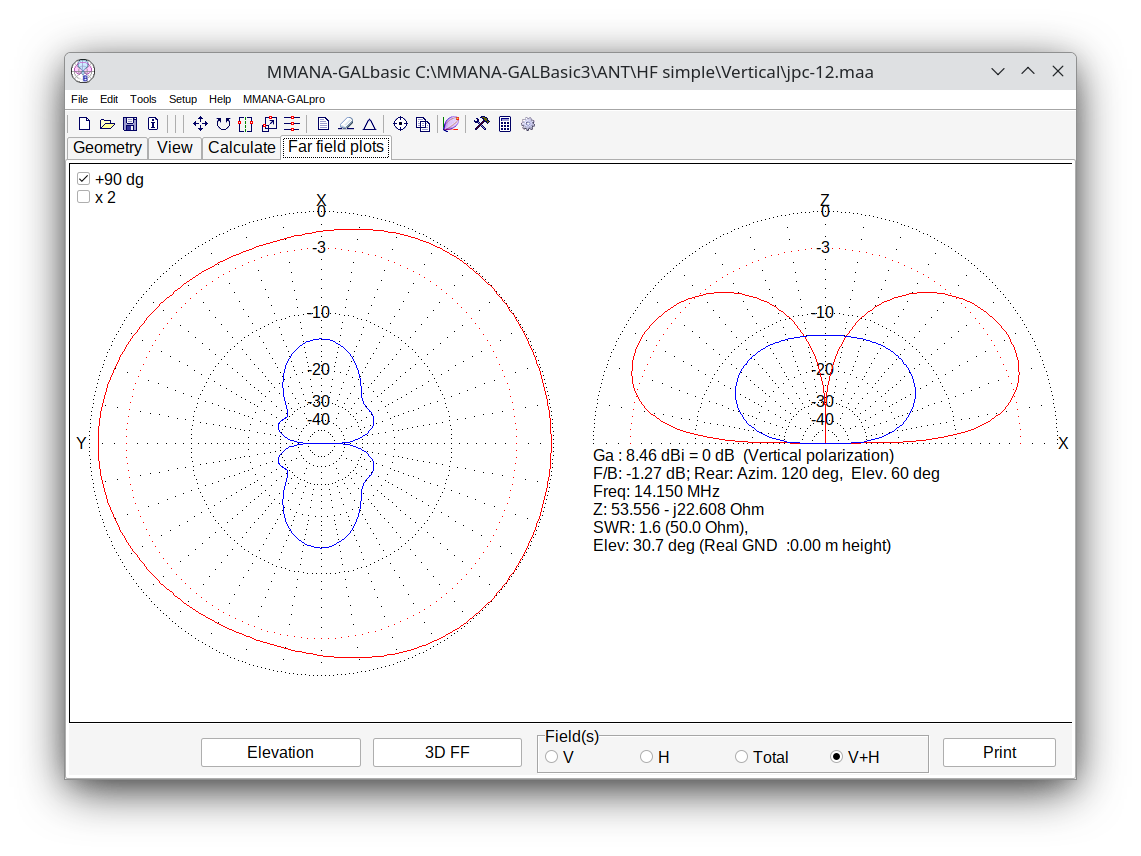
To be honest I’m not sure antenna modelling is for me, at this early point in my ham radio journey. I’ve built one antenna, but firmly by following measurements calculated for me automatically. Maybe I’ll revisit this in a few years’ (or decades’) time, when I have more time and more space for experimenting with antenna designs.
Week 20 (12-18 May): Decode the RTTY transmission of DWD on 10101 kHz
This one wasn’t too hard. After making observations of the signal strength of the DWD DDK9 RTTY beacon/weather service in week 15, it was a relatively simple matter to decode it too. I wasn’t able to find an authoritative introduction to what settings to use in fldigi, but from a couple of forum posts and a bit of trial and error, I had a successful decode using the following settings:
- Radio dial frequency 10.101.800 Hz, LSB mode
- fldigi software
- 450 Hz carrier shift, 50 bps baud rate, 5 bits per character, no parity, 1 stop bit
- Reverse enabled (“Rv” button in lower right of software)
- Decode centre frequency set to 1000Hz, to correctly position the red bars above the signal.
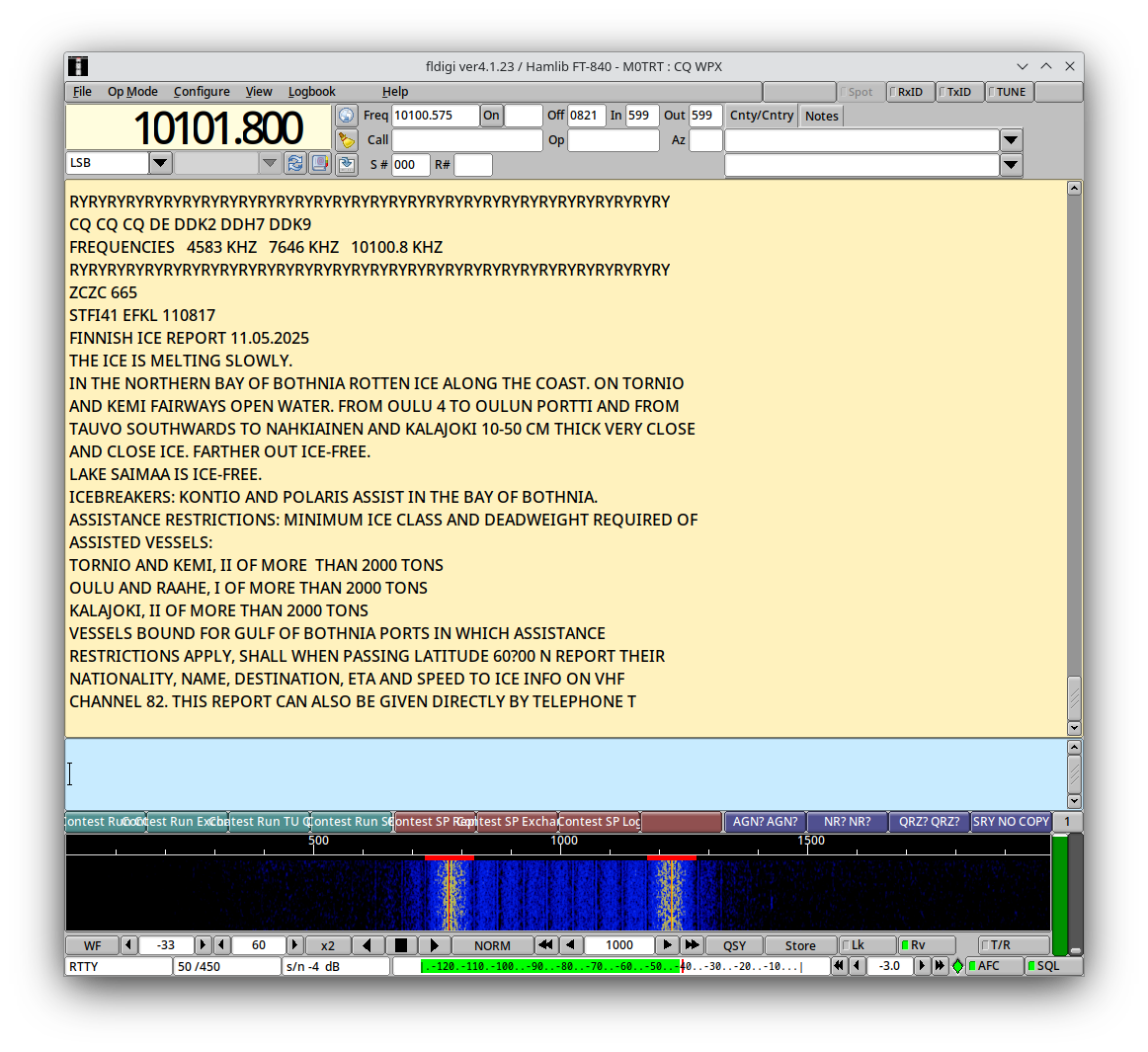
I also found some useful general information here, and the broadcast schedule here which allowed me to grab a weather report as it came in.
That’s all for this round-up, see you in mid-June for the results of weeks 21 to 24!
Comments